
How to Use 74HC595: Examples, Pinouts, and Specs
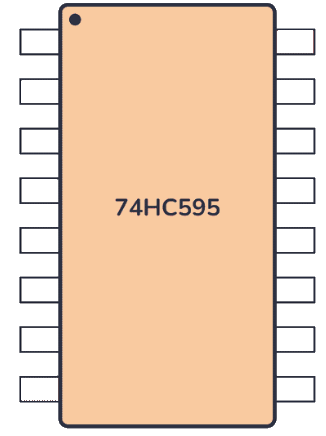
 Design with 74HC595 in Cirkit Designer
Design with 74HC595 in Cirkit DesignerIntroduction
The 74HC595, manufactured by Nexperia, is an 8-bit serial-in, parallel-out shift register with a storage register and 3-state outputs. This component is widely used to expand the number of output pins available on a microcontroller, making it an essential part of many digital electronics projects. It allows for efficient control of multiple outputs using only a few input pins, which is particularly useful in applications such as LED displays, multiplexing, and other digital control systems.
Explore Projects Built with 74HC595
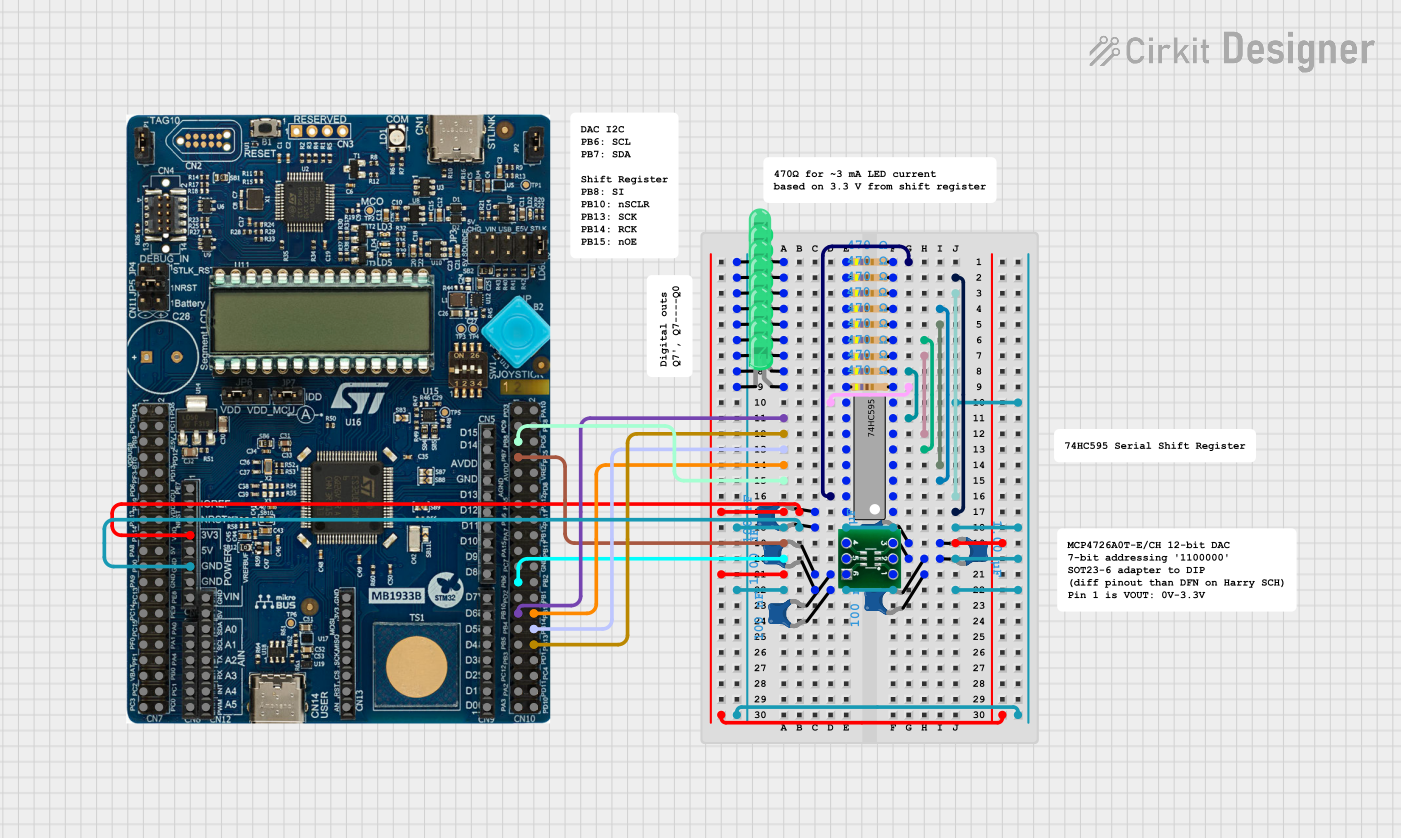
 Open Project in Cirkit Designer
Open Project in Cirkit Designer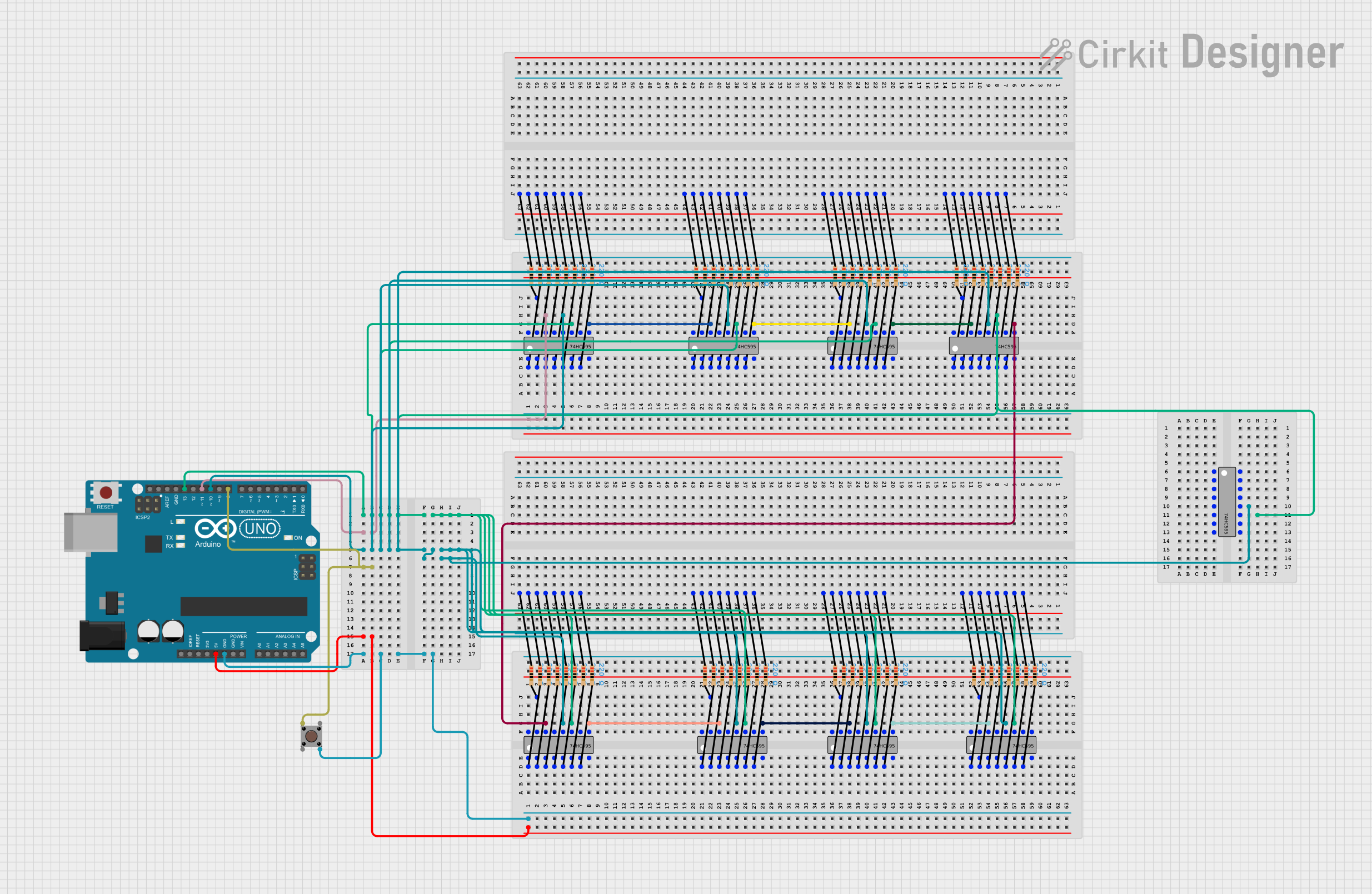
 Open Project in Cirkit Designer
Open Project in Cirkit Designer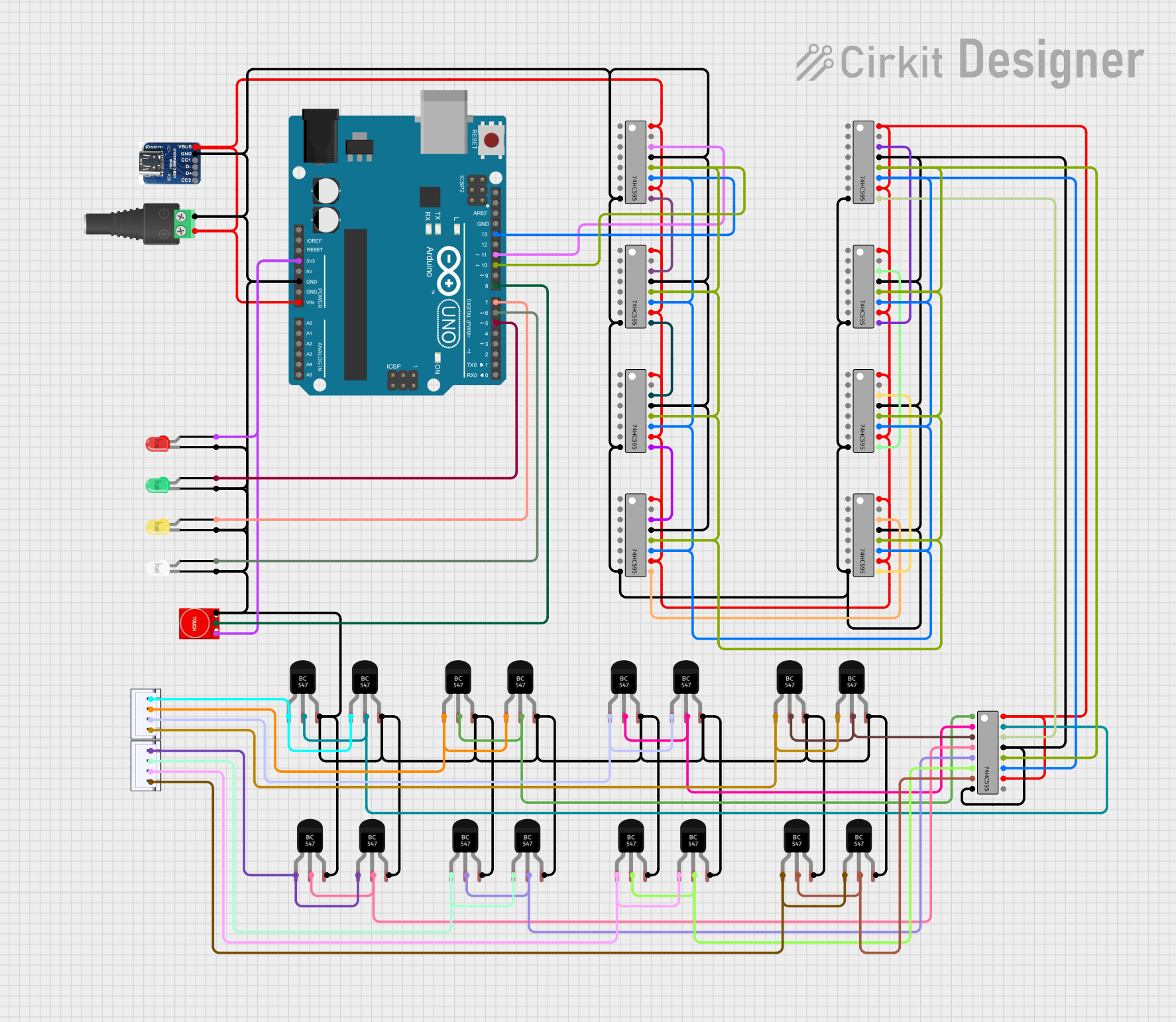
 Open Project in Cirkit Designer
Open Project in Cirkit Designer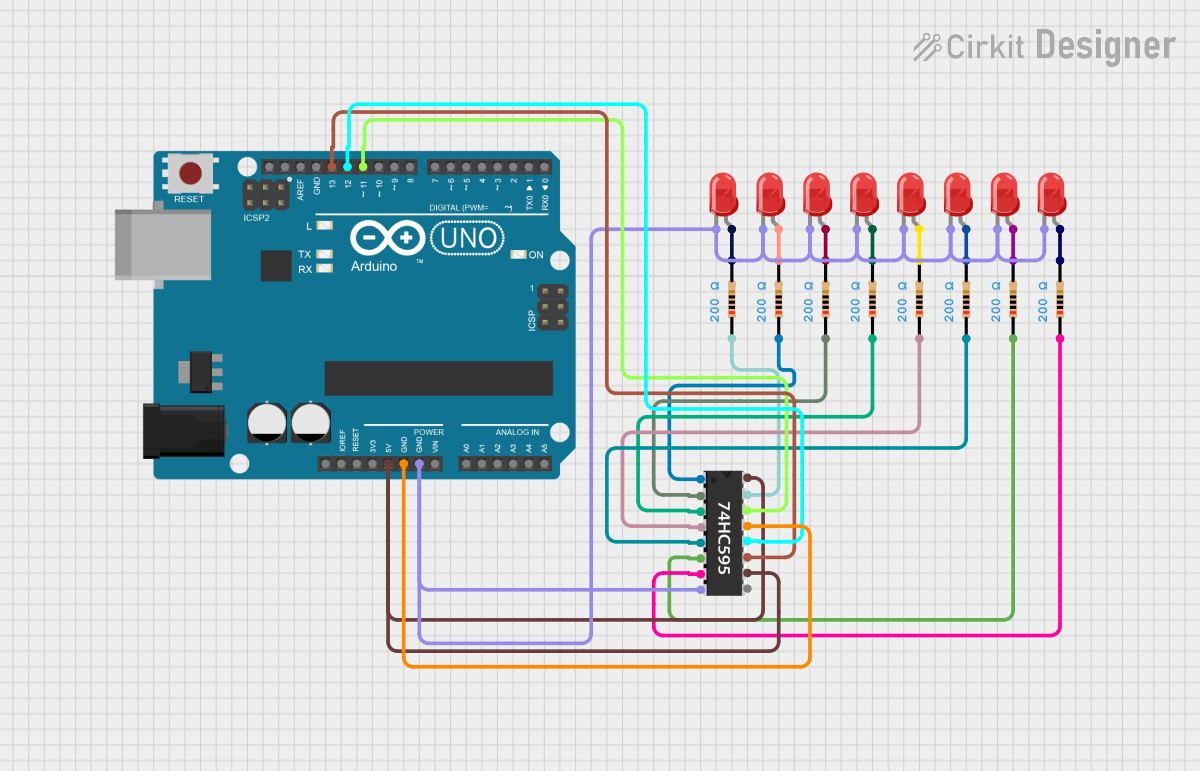
 Open Project in Cirkit Designer
Open Project in Cirkit DesignerExplore Projects Built with 74HC595

 Open Project in Cirkit Designer
Open Project in Cirkit Designer
 Open Project in Cirkit Designer
Open Project in Cirkit Designer
 Open Project in Cirkit Designer
Open Project in Cirkit Designer
 Open Project in Cirkit Designer
Open Project in Cirkit DesignerTechnical Specifications
Key Technical Details
| Parameter | Value |
|---|---|
| Supply Voltage | 2V to 6V |
| Input Voltage | 0V to Vcc |
| Output Current | ±35mA |
| Power Dissipation | 500mW |
| Operating Temperature | -40°C to 125°C |
| Propagation Delay | 15ns (typical) |
| Package Type | SOIC-16, TSSOP-16, DIP-16 |
Pin Configuration and Descriptions
| Pin No. | Pin Name | Description |
|---|---|---|
| 1 | Q1 | Output pin 1 |
| 2 | Q2 | Output pin 2 |
| 3 | Q3 | Output pin 3 |
| 4 | Q4 | Output pin 4 |
| 5 | Q5 | Output pin 5 |
| 6 | Q6 | Output pin 6 |
| 7 | Q7 | Output pin 7 |
| 8 | GND | Ground |
| 9 | Q7' | Serial out (for cascading) |
| 10 | MR | Master reset (active low) |
| 11 | SH_CP | Shift register clock input |
| 12 | ST_CP | Storage register clock input (latch pin) |
| 13 | OE | Output enable (active low) |
| 14 | DS | Serial data input |
| 15 | Q0 | Output pin 0 |
| 16 | Vcc | Supply voltage |
Usage Instructions
How to Use the 74HC595 in a Circuit
- Power Supply: Connect the Vcc pin (16) to a 5V power supply and the GND pin (8) to ground.
- Data Input: Connect the DS pin (14) to the data output pin of your microcontroller.
- Clock Inputs: Connect the SH_CP pin (11) to a clock pin on your microcontroller to shift data into the register. Connect the ST_CP pin (12) to another clock pin to latch the data into the storage register.
- Output Enable: Connect the OE pin (13) to ground to enable the outputs.
- Master Reset: Connect the MR pin (10) to Vcc to disable the reset function.
- Outputs: Connect the Q0-Q7 pins (15, 1-7) to the devices you want to control (e.g., LEDs).
Important Considerations and Best Practices
- Decoupling Capacitor: Place a 0.1µF decoupling capacitor between Vcc and GND to filter out noise.
- Cascading: To control more outputs, connect the Q7' pin (9) of the first 74HC595 to the DS pin (14) of the next 74HC595.
- Timing: Ensure proper timing between the SH_CP and ST_CP signals to avoid data corruption.
- Current Limiting: Use current-limiting resistors on the output pins if driving LEDs to prevent damage.
Example Arduino Code
// Pin definitions
int dataPin = 2; // DS pin of 74HC595
int clockPin = 3; // SH_CP pin of 74HC595
int latchPin = 4; // ST_CP pin of 74HC595
void setup() {
// Set pin modes
pinMode(dataPin, OUTPUT);
pinMode(clockPin, OUTPUT);
pinMode(latchPin, OUTPUT);
}
void loop() {
// Example pattern to display on LEDs
byte data = 0b10101010; // Binary pattern to shift out
// Shift out the data
digitalWrite(latchPin, LOW); // Prepare to latch data
shiftOut(dataPin, clockPin, MSBFIRST, data); // Shift out data
digitalWrite(latchPin, HIGH); // Latch data to output pins
delay(1000); // Wait for 1 second
}
Troubleshooting and FAQs
Common Issues
No Output on Pins:
- Solution: Check the OE pin (13) to ensure it is connected to ground. Verify the power supply connections and ensure the Vcc and GND pins are properly connected.
Incorrect Output:
- Solution: Verify the timing of the SH_CP and ST_CP signals. Ensure the data is correctly formatted and the shiftOut function is used properly.
Overheating:
- Solution: Check for excessive current draw on the output pins. Use current-limiting resistors if driving LEDs or other loads.
FAQs
Can I cascade multiple 74HC595s?
- Yes, you can cascade multiple 74HC595s by connecting the Q7' pin of one to the DS pin of the next.
What is the maximum number of 74HC595s I can cascade?
- Theoretically, you can cascade as many as you need, but practical limitations such as signal degradation and timing issues may arise after a certain number.
How do I reset the 74HC595?
- To reset the 74HC595, pull the MR pin (10) low momentarily.
By following this documentation, you should be able to effectively integrate the 74HC595 shift register into your projects, expanding the output capabilities of your microcontroller with ease.